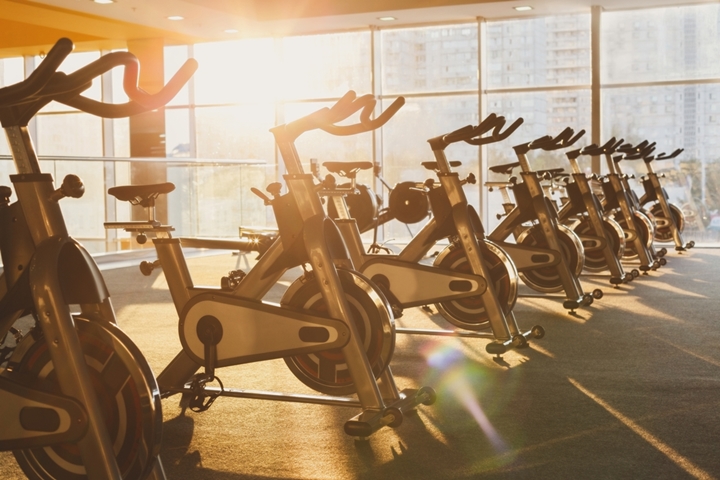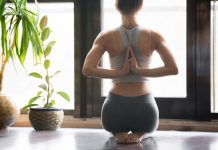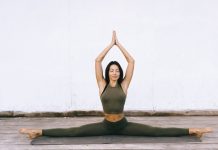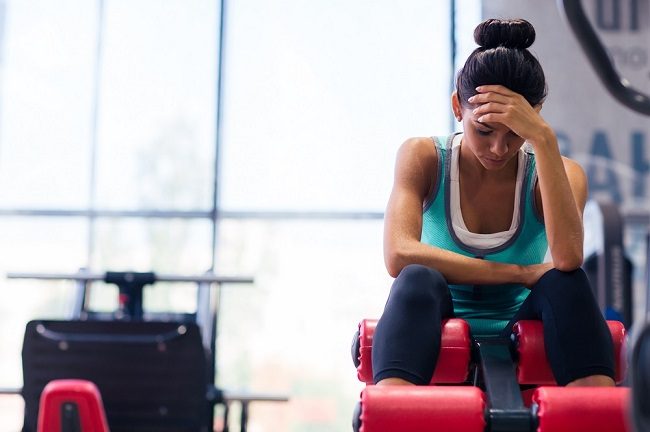
Ashtanga Vinyasa Yoga, or simply Ashtanga Yoga, is the modern form of the traditional Hatha Yoga and forms the basis of almost all vinyasa, power and flow style yogas that are popular in the west today. Its roots go back to the early 1900s to an ancient text called Yoga Korunta, written by Vamana Rishi. The text was then passed on down from teacher to disciple and by 1927, it was imparted by Krishnamacharya to the then 12 year old Sri K Pattabhi Jois. By 1948, Pattabhi Jois had set up the Ashtanga Yoga Research Institute in Mysore where he propagated his drive to promote and popularize this specific form of yoga.

The Eightfold Path
Ashtanga Yoga literally means “eight- limbed yoga”; that is, the eightfold path towards attainment of peace of mind (ashta= eight, anga= limbs, yoga= peace of mind). According to Patanjali, author of Yoga Sutra, the quest for inner peace involves an eight- phase journey:-
- Yama (moral codes)
- Niyama (self- purification and study)
- Asana (posture)
- Pranayama (breath control)
- Pratyahara (sense control)
- Dharana (concentration)
- Dhyana (meditation)
- Samadhi (contemplation)
The first four limbs- Yama, Niyama, Asana and Pranayama- are considered as external cleansing practices while the next four- Pratyahara, Dharana, Dhyana and Samadhi- are internal cleansing practices. According to Pattabhi Jois, any defects incurred during any or all of the external practices can be rectified but defects in the internal practices cannot, and is dangerous for the mind if the precise method of Ashtanga yoga is not followed.
How and Why?
The term ‘vinyasa’ refers to the alignment of movement and breath, creating a dynamic flow to the transitions between asanas, wherein more attention is given to the breath and the journey from each asana to another, rather than on merely attaining the perfect body alignment.
The breathing technique in Ashtanga is referred to as ‘free breathing with sound’ by Sharath Jois, Director of the K Pattabhi Jois Ashtanga Yoga Institute, where each breath is relaxed and aligned with every movement, while a sound like that of the ocean resonates in the throat. Vinyasa and this breathing style together produce internal heat which leads to proper blood circulation and perspiration, thereby cleansing the body in the process.
Bandha or muscle locking is another important principle of Ashtanga which assists the practitioner in maintaining an asana position and also moving in and out of it. There are basically three main Bandhas, namely the Mula Bandha, Uddiyana Bandha and the Jalandhara Bandha. The Mula Bandha, or root lock, is the tightening of the pelvic and perineal muscles. Uddiyana Bandha is the contraction of the lower abdominal muscles. It is considered to be the most important Bandha as it supports your breathing and strengthens the core muscles. Jalandhara Bandha is performed by extending the neck and elevating the sternum (breastbone) as you lower your head till your chin touches your chest, while your tongue pushes against the palate. It prevents pranic energy from escaping and also stops any pressure build- up in the head while holding your breath.
Drishti (focused gaze) is where you look at while in an asana. Its primary intention is to develop concentration and focus. The most commonly practiced Drishti is Urdhva, or upward gazing, where the eyes are lifted while the body is perfectly aligned from crown to tailbone. Apart from Urdhva, there are eight other Drishtis which instruct you where to direct your gaze during each asana.

Ashtanga Away!
When practiced diligently, Ashtanga Yoga brings physical and mental afflictions to rest, and you are able to experience vibrant health and sharp self- awareness.
The mind is brought under control and subsequently, the six poisons as per the Yoga Shastra that surround the spiritual heart- kama (desire), krodha (anger), moha (delusion), lobha (greed), matsarya (envy) and mada (sloth)- are burnt away and the light of your inner peace shines forth!


 Traqade
Traqade


































I love this article. This is very well written. You have truly enriched me with some excellent knowledge about ashtanga yoga
I want to join yoga
Practicing yoga is not easy, but I still try to practice every day.
Digital culture in Bangladesh is booming, and more and more people are looking for reliable platforms for entertainment. https://betjili-apps.com/login/ is often named as one of the best places for a calm and enjoyable game. My experience confirmed this – the user-friendly design and stable operation of the site allow you to simply enjoy the process and forget about everyday worries.
hgh pen kaufen
References:
hulkshare.com